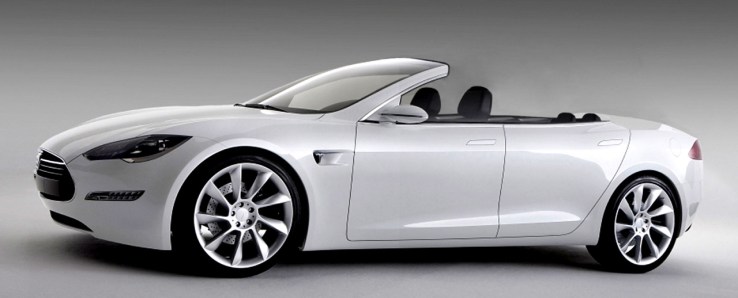
Platform Convergence
At Build Microsoft discussed API harmony between Windows and Windows Phone, noting that it had now reached around 90% parity between the two. This ties into its
new universal app category that will spread across phones and more traditional Windows devices. Guggs told TechCrunch that that number, 90%, is up from around 25% to 30% a year ago.
Regarding how much higher the 90% figure could go, Guggs indicated that Microsoft may not want 100% API unity, due to different device use cases: “[D]o you ever put printer drivers into a phone? Maybe. I don’t know yet. Do you ever put high-end camera support into a laptop? Maybe. I don’t know. So some of the things are logically not in the overlap API sets because they don’t make sense.”
Gallo agrees, stating that he wants “one API set, one design point that I can go target the breadth of devices, and so what developers are really asking for is hey, make it easy for me to hit this breadth of devices” regardless of what ‘flavor’ of Windows they are targeting.
This raises the question of the unification of Microsoft’s app stores. Will it eventually merge the Windows and Windows Phone stores? Guggs is optimistic: “I think in the long run you still want to get to one store.” There are features like carrier-billing that are prevalent in one and not the other, of course.
The gist is that apps are now systemized to a point, but not completely, and that the stores that vend them are similar, yet unique. The trend is pretty simple: More unification as time passes. It’s worth noting that this is not a new strategy. It’s continuation of prior efforts, now more, if still incompletely realized.
Windows Phone and Windows are smaller players in the app game when compared to their key rivals, iOS and Android. Gallo is frank on the matter: “When we look at [the actual] numbers, [we're still] small, but the numbers are growing.” Despite the modest figures, Gallo states that “nobody writes us off anymore.”
In Guggs’ estimation, there is a commercial advantage to having unified apps, as it helps Microsoft pitch developers on its platforms. He described that conversation as follows: “Now you go out and say, hey, look, if you write the app I can run it across both. Now let’s have a business conversation about what makes why is this interesting.”
So while Gallo is correct that Windows Phone is modest in size, when lashed to Windows 8.x’s app download figures, the value proposition — even if still smaller when combined than the upper echelons of Apple and Google’s platforms — makes more sense. It’s an open question as to how much this will help. The strategy’s effectiveness will be vetted by the rising, or falling download and development rates. It should be considered a positive sign if an acceleration of development work is realized once universal apps become the developer standard for the Microsoft platform world.
If development remains flat, that will be more than problematic for the company.
Windows Phone and Windows 8.x are not the only platforms on the shared Windows core: Xbox.
Xbox
Microsoft confirmed at Build that Xbox will
eventually be brought into the universal app ecosystem. Gallo declined to discuss timeframes with TechCrunch, but did indicate that from a “visionary point of view,” Microsoft’s intention is to have “Windows, Windows Phone, Xbox [...] able to use the shared project.” The company has “a common API set to do that.”
Why is Xbox not yet part of the universal family? Gallo explained: “It’s on a slightly different cadence as far as code development, just because of timing of getting everything on the different platforms.”
It feels odd to discuss Xbox sales momentum as potentially important for the Windows platform, but if game developers could bring so-called ‘AAA’ games from the Xbox One to the Windows Store, it would help bolster the quality of that marketplace. That’s a long way from that actually happening, but it’s worth considering.
Note of course that this is all intention, and not completed action. Microsoft has to build the above, well, and get developers to use it. That’s a large task.
My Platform, Your Platform
Microsoft once ruled the platform space. It was the platform. Then the Web came along, and at least partially exploded that hegemony. With Internet Explorer bundling, Microsoft managed to claw a chunk of that back. Firefox, and then Chrome came to fore, challenging its dominance, and then Apple showed up and carved out massive chunks of the platform world with its iPhone and iPad devices. iOS was joined by, and then surpassed by Android.
Windows chugged along, slowly losing sales share to consumers and businesses alike. Microsoft now seems quite aware of its loss of preeminence. Guggs:
I think there was a time in history, not just our history but in general, where people said, okay, I have to go work on this ecosystem or that ecosystem or this tool chain or that tool chain. And nobody played with anybody else. And I think we had a reputation for some period of time of not playing well with others. I think I want to sort of make sure we’re tuning that reputation to say, hey, we play great with others, and the stuff we build, it’s really good actually.
Not that he wouldn’t love for you to use only Microsoft tools, but he admitted that “it’s not realistic today that all developers use all Microsoft. In fact there’s many developers who don’t.” Microsoft, in his view, is now trying to “both participate and support the broad set of developers by making sure that the services we use, even if [developers] don’t use all of our stuff,” those same people can employ whatever they find useful.
Gallo is in very much the same headspace, indicating that Microsoft recognizes “clearly that we are not the only game in town and that the world is diverse,” adding “and [the world is] going to stay diverse. People just don’t always think Windows first.” The market might have been saying that for some time, but to hear it from Microsoft itself remains refreshing.
Gallo admits that the stance is new: “We think it and we’re going to embrace it. That has not been a typical Microsoft stance embracing it. We’re embracing it and we’re going to thrive in it.”
I highlight this section from the transcripts to underscore that what we heard at Build wasn’t lip-service to a supposed new perspective. Speak to various Microsoft executives and you get the impression that they mean it – that Microsoft remains committed to building its own platform (that Widows unity bit), but is also hellbent on selling its services to anyone with an Internet connection, mobile or otherwise.
___________________________________________________________________________________















